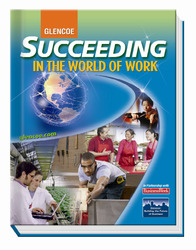Succeeding in the World of WorkChapter 18:
Time and Information ManagementChapter Summaries with Key Terms and Academic VocabularySection 18.1 Summary
The time-management process can help you use time effectively. First, make a task list. Second, break large projects into smaller steps. Next, prioritize each task. Then decide how long each task will take to complete. Finally, set up and maintain a schedule. Other time-saving strategies include making good use of downtime, avoiding procrastination, and being flexible when something interrupts your plans. In the workplace, you should also be aware of how you use other people’s time. Discuss only work-related matters and listen to assignment carefully. Section 18.2 Summary
Organizing your work area will help you work efficiently. Use the near-far rule and place things you use often near you and those you use seldom farther away. Place similar things together. To organize information, create a file system and review documents to determine their importance and discard those you do not need. Tips for creating a file system include creating folders and labels. Many of the rules for managing paper documents apply to managing electronic information. You must regularly back up electronic files to prevent the loss of important information. Key Terms
timeline
schedule
downtime
access
directory
subdirectories
Academic Vocabulary
estimate
indicate
logical  | 




